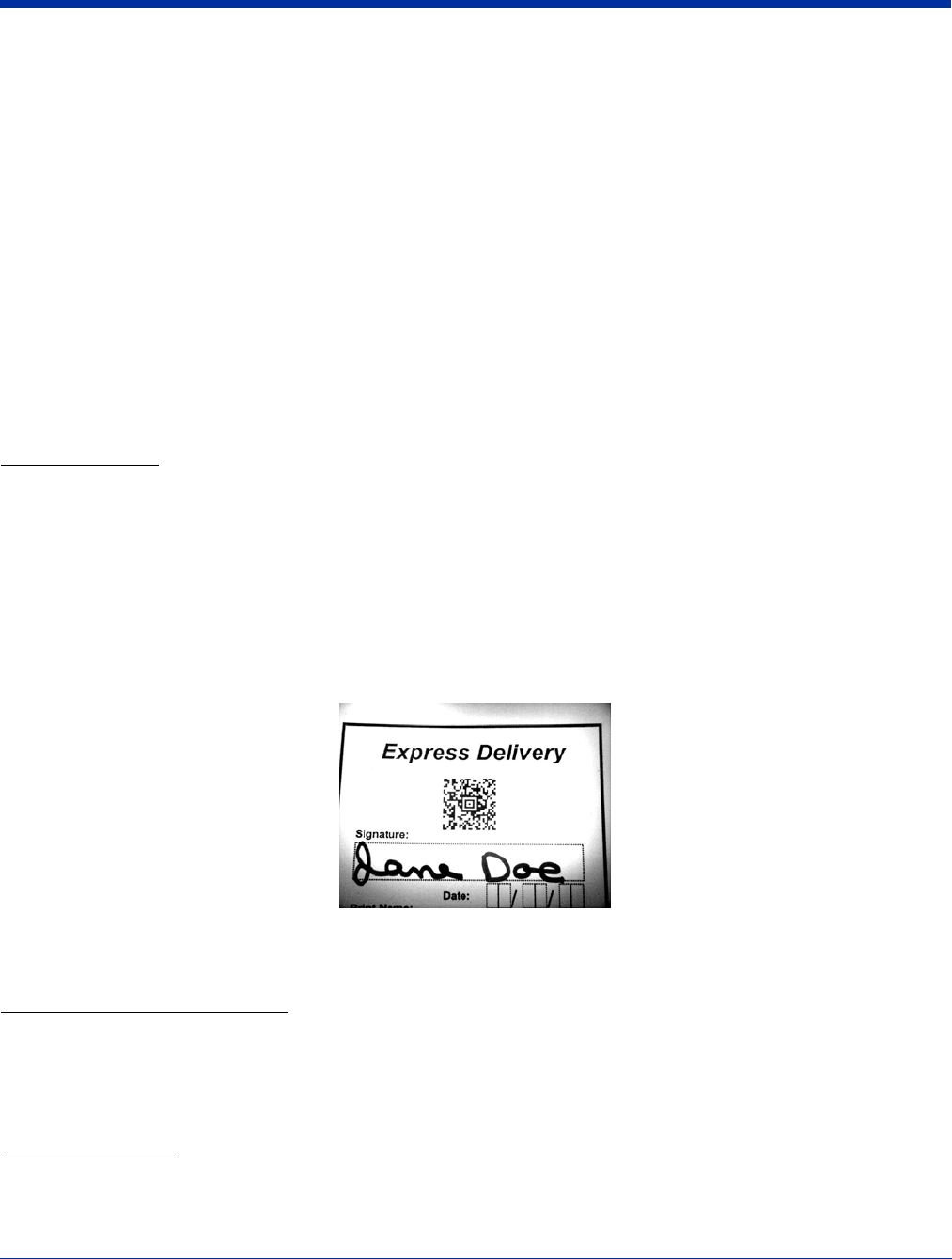
4 - 6 Rev C Dolphin® 9500 Series User’s Guide
Capturing Images
The image-capture process is an intuitive, split-second operation for experienced users. By following the basic guidelines, new
users can easily develop their own technique and, with practice, quickly learn to adapt it to different application environments.
Note: The Dolphin 9501 and Dolphin 9551 do not support image capture.
Image Preview When the imaging process is initiated, Dolphin touch screens display a preview of the object. This is
a live video image of what the imager is currently viewing. The live video image has a slightly
degraded appearance compared to the captured image. This is normal.
Scan Key The SCAN key captures images on both the Dolphin 9500 and Dolphin 9550 terminals. The SCAN
key is the only way to capture an image on the Dolphin 9500; however, on the Dolphin 9550, you can
also use the Scan Trigger on the pistol-grip handle.
Image Files The terminal is capable of saving images in a number of industry-standard file formats such as *.bmp,
*.jpg and *.png. The default file format for images is a grayscale *.jpg.
The image quality and related file size are determined by the data compression method used by the
software application used to take images. The average size of the image file is approximately 4-8K.
However, the size of the image depends on the content of the image - the more complex the content,
the larger the file size.
For the highest quality image, take grayscale images.
Taking an Image
The following steps are basic guidelines for taking images:
1. Point the Dolphin terminal directly at the object. The imager points straight out the top panel.
2. To preview the image, press and hold the SCAN key.
On the Dolphin 9550, you can also press and hold the Scan Trigger, page 3-6.
3. The touch screen displays a preview of the object, and the decode and scan LEDs light red.
4. Adjust the terminal’s position until the object appears on the screen the way you want it to appear in the image.
5. Hold the terminal still and release the SCAN key or Scan Trigger. The scan and decode LEDs flash red, the screen flashes,
and the captured image appears on the screen.
6. Unless otherwise specified by the application in use, the image is saved to the My Device folder (Start > Programs > File
Explorer > My Device).
5300 High-Vis Aiming Pattern
If your Dolphin terminal is configured with the 5300 imager, you can enable the aiming pattern for imaging in the Imaging Demo.
1. Tap Start > Demos > Imaging Demo > Options menu > Aimer.
2. The aiming pattern is now enabled for imaging.
Uploading Images
Image files can be uploaded to a host PC via Microsoft ActiveSync and a Dolphin communication peripheral or your wireless
radio connection.
